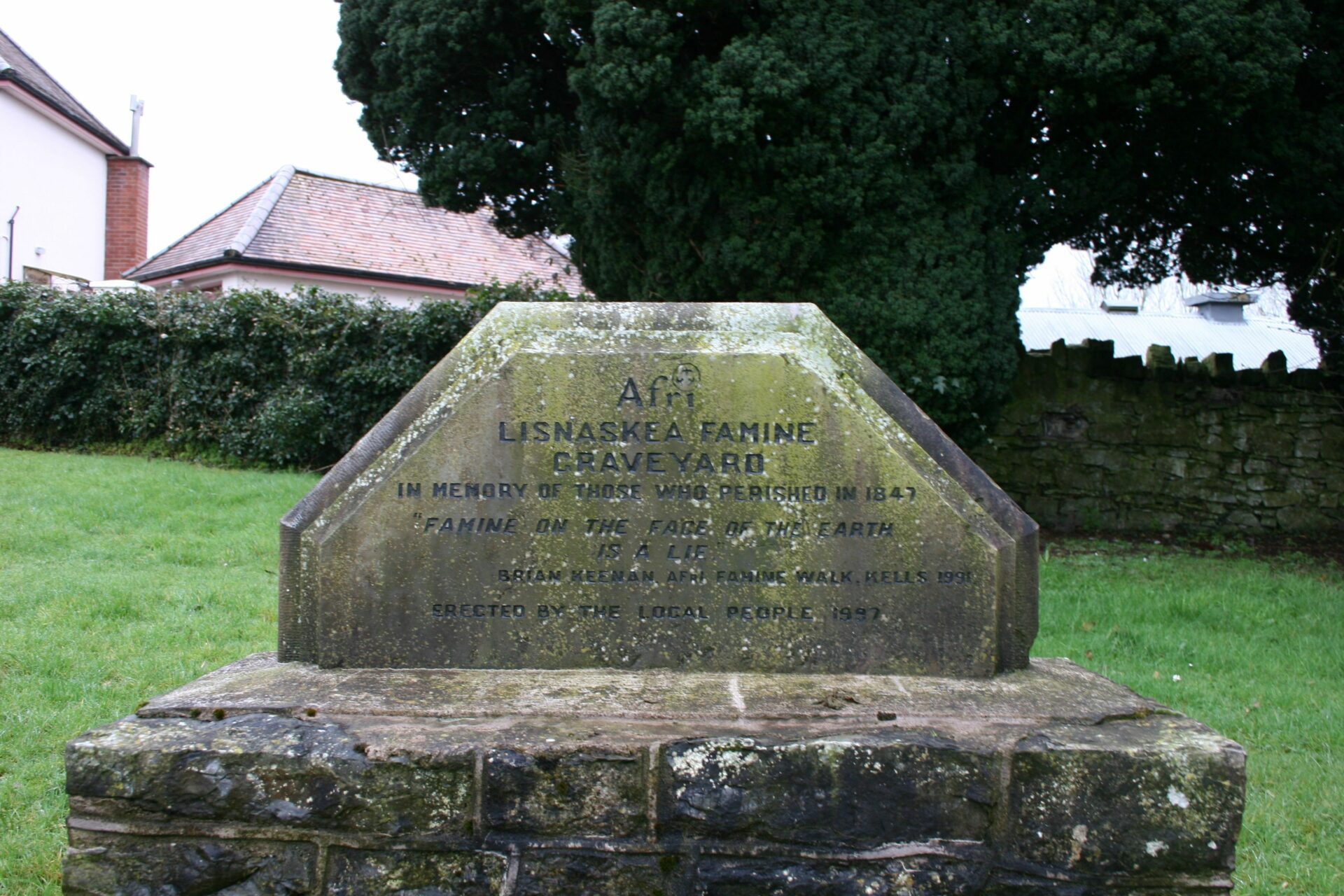Lisnaskea Workhouse & Memorial

Lisnaskea workhouse is situated just off the Newtownbutler road. In 1841 the Union had a population of 37,920. The site for the workhouse was bought from the local landlord Lord Erne on 16 September 1841 for £336. The building was to house 500 paupers. It continued to house the homeless and destitute until the 1940s.
Lord Erne gave help to the poor and hungry during the famine and started two soup kitchens in Lisnaskea. He was instrumental in convening a Relief Committee made up of landlords and rate-payers from the Barony of Magherastaphena. The committee provided work for the poor. Lord Erne also imported meal for his tenants when none was available locally. His wife, Lady Selina, established a lace school where women could learn needlework skills in the hope that they would be able to earn a little money for food.
The first inmates were admitted to Lisnaskea Workhouse on 25 February 1843. In 1846 the house had 817 inmates with many of them suffering from typhus and typhoid. Many died and were buried in hastily constructed graves, which caused concern among locals because of “the indecent and shameless piling of dead paupers in the low ground.”
Assisted Emigration
In an attempt to offload some of their responsibility and alleviate the overcrowding in the workhouse, The Board of Guardians agreed to send forty four female orphans to New South Wales and Western Australia in 1848 and 1849. They were aged between 14 and 18. In all The Earl Grey Emigration Scheme which ran for two years brought over 4000 orphan girls to Australia.
Erected by Lisnaskea Historical Society, the famine memorial marks the site where large numbers were buried in the Paupers Graveyard at the height of the Great Famine. It also serves as a reminder to us of the large numbers who continue to die of starvation in Africa. The hand carved limestone came from the derelict Magheramena Castle near Belleek and has a direct link with the other famine graveyards in the county.
The inscription stone was unveiled on 29th November 1997 by Mrs Christina Jones whose grandmother was a cook in the workhouse, and Frank Gilbride who was born in the building. The manicured lawns in this peaceful park shaded by 12 yew trees known locally as the “Twelve Apostles” reveal little of a turbulent time in the history of Lisnaskea Poor Law Union when hunger and death stalked the land.